The Economics and Statistics Division maintains archives of previous publications for accountability purposes, but makes no updates to keep these documents current with the latest data revisions from Statistics Canada. As a result, information in older documents may not be accurate. Please exercise caution when referring to older documents. For the latest information and historical data, please contact the individual listed to the right.
<--- Return to Archive
For additional information relating to this article, please contact:
February 28, 2023NON-RESIDENTIAL FIXED CAPITAL INVESTMENT, Q4 AND ANNUAL 2022 Non-residential fixed capital investment consists of expenditures made by business, governments and non-profit institutions serving households that add to the capital stock for production of goods and services in an economy. Investment that are included are buildings, engineering construction (i.e. bridge, mine structure), machinery and equipment, and intellectual property products (i.e. software, mineral exploration) but it doesn’t include non-reproducible assets (lands, mineral deposits, natural resources) or housing investment. Statistics Canada has begun to release quarterly data on non-residential fixed capital investment and stock for the provinces with historical data back to 2013. Note, the data is not seasonally adjusted and expressed in current prices.
Year-over-year (Q4 2022 vs Q4 2021)
Nova Scotia non-residential investment (all sectors, all assets, current prices) increased 4.6% from Q4 2021 to Q4 2022, which was a notably slower pace than in all other provinces. Nationally non-residential investment was up 10.3% with Alberta (+11.5%) posting the largest increase.
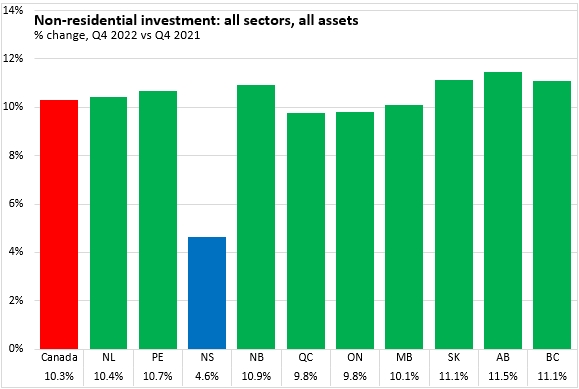
Business sector investment in Nova Scotia increased 9.3%, which was slightly slower than the national pace of 10.1%. All provinces reported similar growth rates in non-residential building investment from Q4 2021 to Q4 2022. Alberta recorded the fastest growth while Prince Edward Island and Nova Scotia reported the slowest.
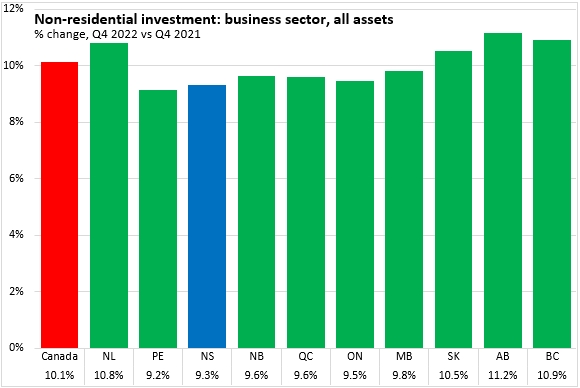
Government fixed capital investment increased 0.5% in Nova Scotia from Q4 2021 to Q4 2022, the slowest pace among provinces by a notable margin. Across Canada, government investment (which includes all orders of government) was up 10.8% with the fastest gain in Saskatchewan.
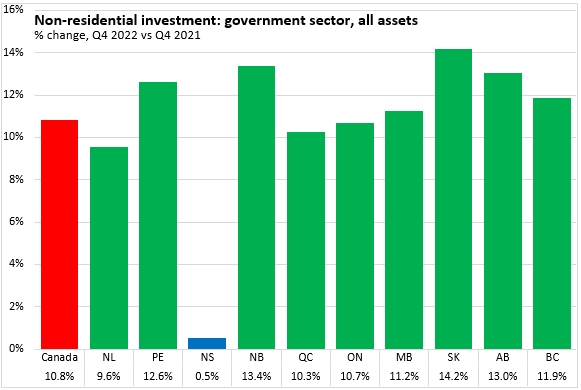
Nova Scotia's investments in fixed non-residential capital were almost evenly split between government investment ($956 million) and business investment ($915 million). Machinery and equipment made up the largest asset category of investment ($629 million), followed by engineering construction ($563 million).
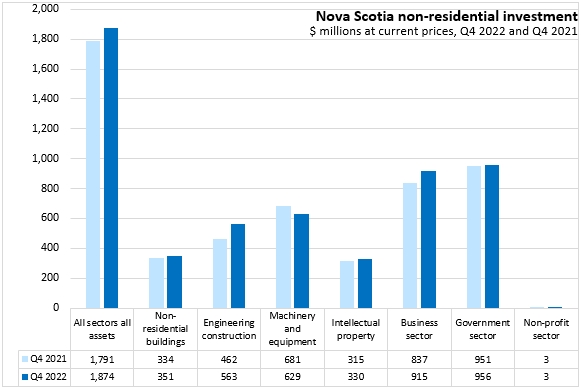
Engineering construction (+21.9%) reported the fastest year-over-year change among asset categories. Machinery and equipment investment was down 7.6% in Nova Scotia, the only asset category to report a decline. The decline in machinery and equipment investment was entirely concentrated in the government sector as business investment in machinery and equipment was up.
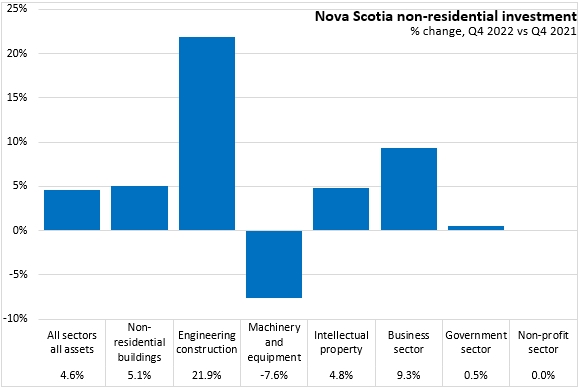
Annual (2022 vs 2021)
Comparing the annual totals for 2022 and 2021, Nova Scotia's overall non-residential investment grew by 5.7%, which was less than half the pace of the next slowest growing province. Non-residential investment grew by 12.6% nationally with the largest gains in Saskatchewan, Alberta and Newfoundland and Labrafor.

Nova Scotia's business sector investments were up 12.7% in 2022. National business sector investment was up 13.4% in 2022 with the fastest gains in Newfoundland and Labrador. All provinces reported annual investment increases, though Prince Edward Island and Nova Scotia reported the slowest growth (still over 12%).
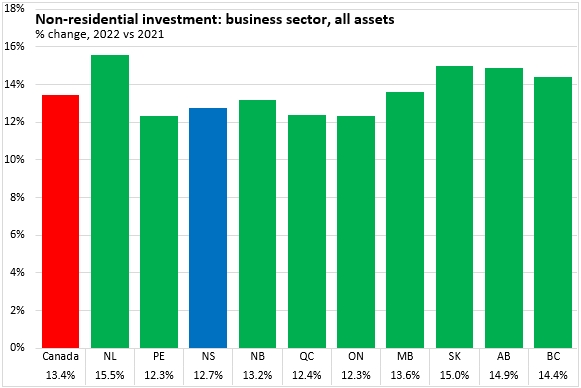
Nova Scotia's government sector investment (all orders) contracted 0.5% in 2022, the only province to report a decline. Nationally, government sector investment was up 10.5% with faster gains in Saskatchewan, New Brunswick and Alberta.
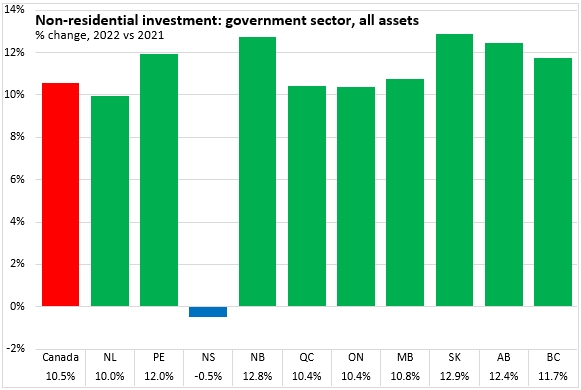
In 2022, Nova Scotia's non-residential investment was evenly split between business ($3,566 million) and government ($3,556 million). Investment was up in all asset classes except machinery and equipment, with the largest gains in engineering construction.
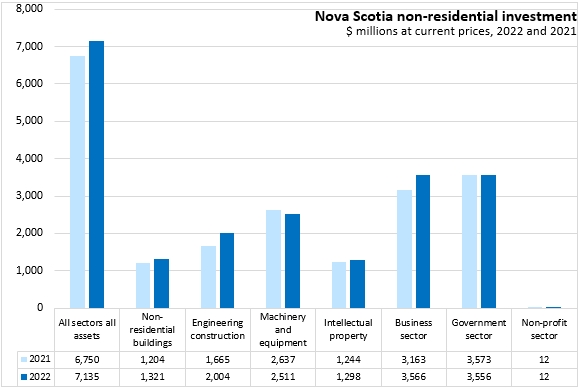
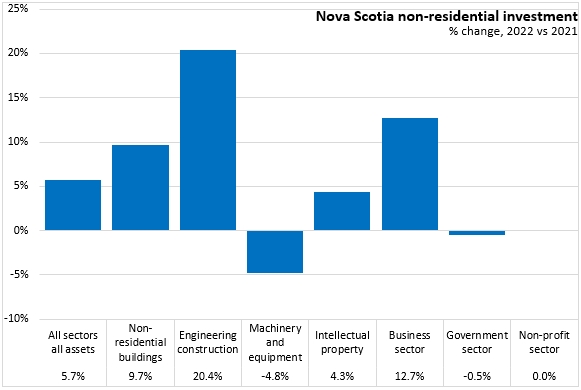
Trends
Nova Scotia's non-residential investment has generally trended up on a year-over-year basis, with the notable exception of 2020.
Business sector non-residential investment trended downward over 2016 to 2020, before picking up in 2021.
Government and non-profit institution serving households was mostly flat from 2014 through 2017, trended upwards from 2017 to 2021 and plateaued in 2022.
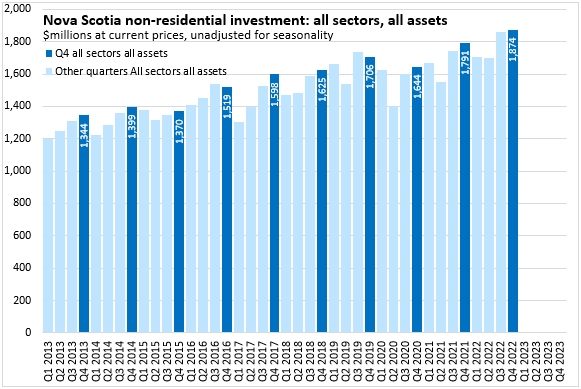
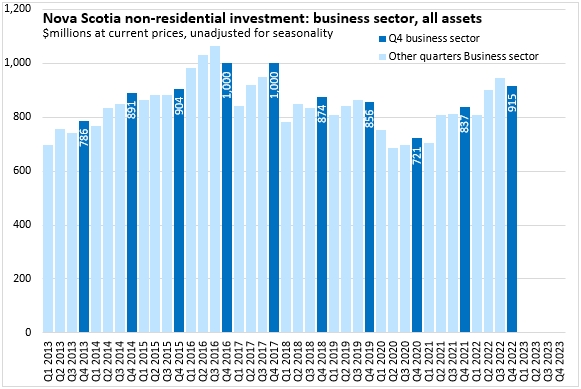
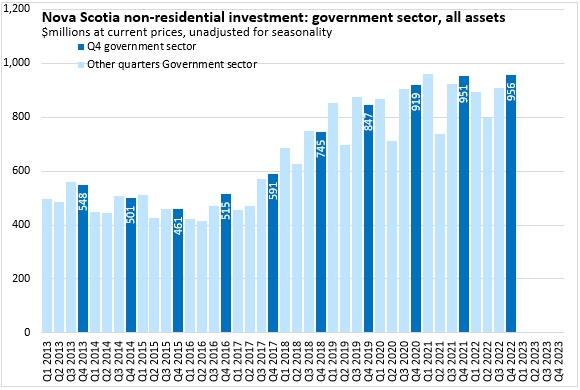
Nova Scotia's investments in non-residential buildings declined from 2013 to 2016 and rose from 2016 to 2020. After a dip in 2020, Nova Scotia's investment in non-residential buildings recovered to its rising trend in 2021 and 2022.
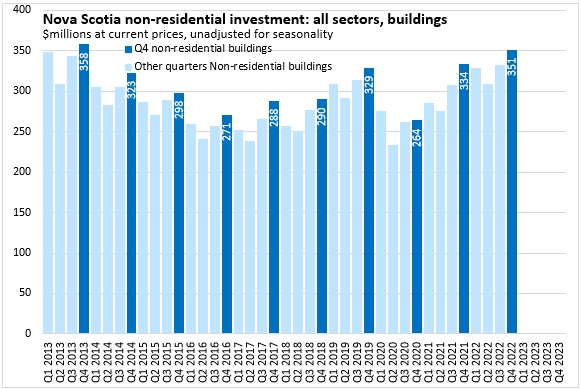
Nova Scotia's investments in engineering construction assets have trended up since 2018.
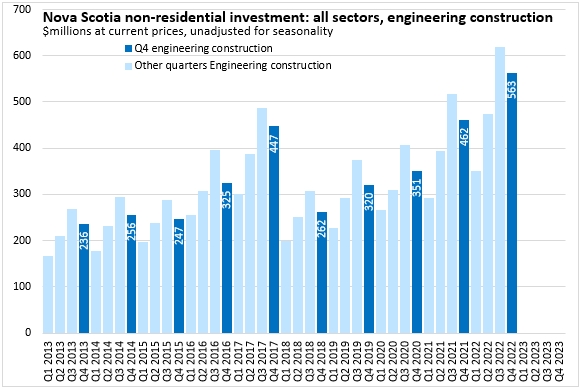
Nova Scotia's investments in machinery and equipment assets have been on a declining trend since 2019.
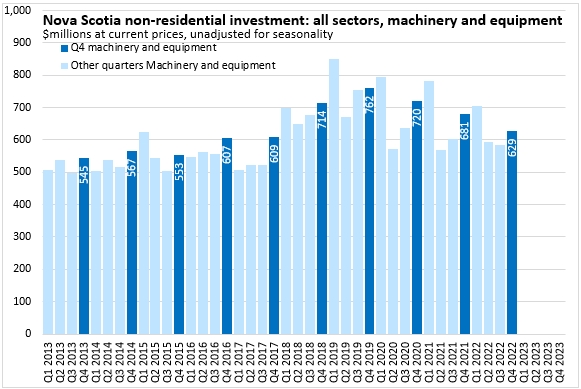
Nova Scotia's investments in intellectual property products has mostly trended up since 2013 with occasional spikes associated with specific offshore exploration projects.

Statistics Canada. Table 34-10-0163-01 Flows and stocks of fixed non-residential and residential capital, by sector and asset, provincial and territorial (x 1,000,000)
<--- Return to Archive